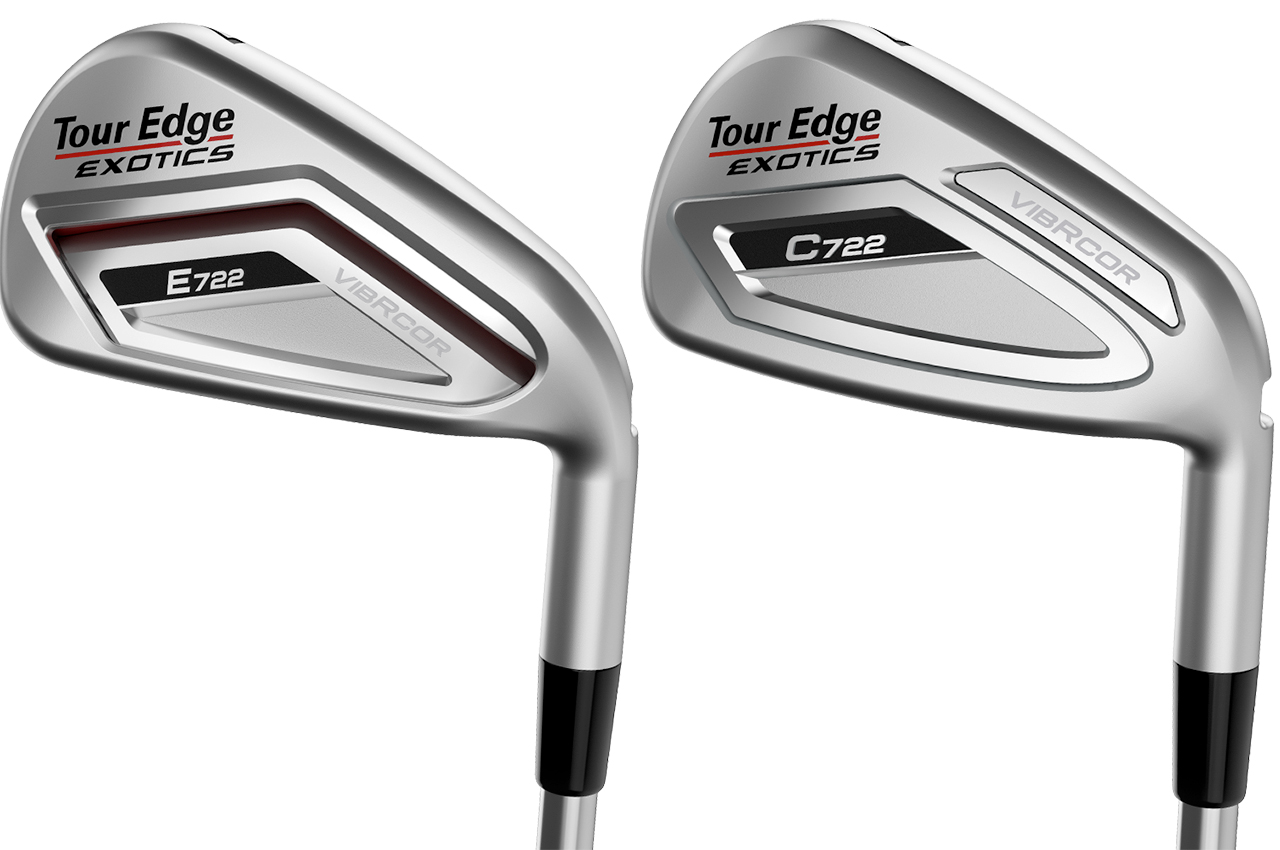Gear: Tour Edge Exotics C722, Exotics E722 irons
Price: $699.99 with steel shafts/$799.99 graphite
Specs: Cast stainless steel heads
Last year, Tour Edge was surprised by the success of the Exotics C721 and E721 irons. The company believed in the designs and the technologies in the clubs, but it was not anticipating that sets of the better player’s C721 would wind up in bags of golfers on the PGA Tour Champions, but they did.
For 2022, Tour Edge is not rocking the boat with the release of the Exotics C722 and Exotics E722 irons. Instead, the Batavia, Illinois-based company is increasing the gap between them, creating a more-clear distinction about who each club is made for.
 Tour Edge Exotics C722 irons. (David Dusek/Golfweek)
Tour Edge Exotics C722 irons. (David Dusek/Golfweek)
Exotics C722
The C stands for competition, and these are hollow-bodied clubs designed to be a better-player’s distance iron.
The Exotics C722 has a cast 17-4 stainless steel body and a forged, maraging steel face. On the inner-facing side, the face has 103 diamond-shaped areas with different thicknesses. Tour Edge refers to this as Diamond Face VFT technology, and it is designed to broaden the sweet spot and allow the hitting area to flex more efficiently to create more ball speed.
Thermoplastic polyurethane is injected inside the heads to absorb excessive vibrations to enhance sound and feel.
The most significant difference in the Exotics C722 over last season’s version is the heads are 15 percent smaller, with a thinner topline, so in the address position, they should be even more appealing to golfers who like a traditional blade.
 Tour Edge Exotics E722 irons. (David Dusek/Golfweek)
Tour Edge Exotics E722 irons. (David Dusek/Golfweek)
Exotics E722
The E stands for extreme, and this is the larger, more forgiving of the new 722 irons.
Like the Exotics C722, the E722 is a hollow-bodied club that has been made with Diamond Face VFT for increased ball speed and the vibration-dampening VIBRCOR polymer injection to soften the feel.
However, the Exotics E722 is larger and has a 360-degree undercut design that allowed designers to lower the center of gravity and pull it back, away from the face. This should encourage higher initial launch angles and help mid- and higher-handicap players get the ball in the air more easily.
Adding extra weight to the toe area also helps broaden the sweet spot and protect ball speed on mis-hits.

